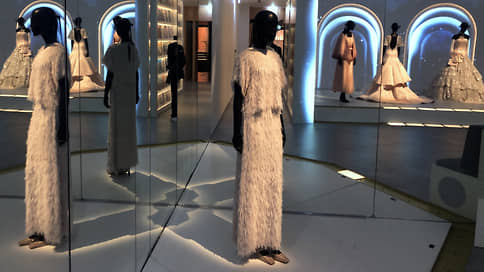At Dior’s house – Newspaper Kommersant No. 16 (7461) dated 01/28/2023
[ad_1]

On Parisian Avenue Montaigne, where Christian Dior opened his fashion house in 1947, a museum dedicated to the history of the man who built one of the most famous brands in the world in just ten years appeared. A Kommersant correspondent in France went to Galerie Dior, which she created in memory of her founder Alexey Tarkhanov.
Christian Dior (1905-1957) was born in Normandy in the town of Granville, where the parental villa “Roomba” is still preserved as a museum. But everyone knows his Parisian address: 30 avenue Montaigne. On February 12, 1947, not the most famous couturier in France, who had just created Christian Dior with someone else’s money, showed his first collection here. He suggested that women forget the war that had just ended, the occupation, ration cards, and finally live in spite of everything.
On that day, a big lady, Harper’s Bazaar editor Carmel Snow, complimented the author on a “revolution” and a “new look.” So New Look entered the history of fashion. Dior moved from the uniform, from “women-soldiers” to “women-bouquets” with, as he said, “a waist as thin as a liana and a skirt as wide as a corolla of a flower.” It was the amazing Dior outfit “Bar” that looked like a flower, consisting of a light jacket with a peplum, emphasizing the already thin waist, and a fluffy black skirt.
Named after a real-life hotel bar, this suit opens a new museum created by Dior for its 75th anniversary. Another reference to flowers is the parade of dresses in front of the Dior family home in Granville, where the photographic flowers are continued by real roses that bloom from spring to autumn behind the high windows of the Parisian museum in the courtyard.
The space was handled by the architect Natalie Crinière, the same one who did the 2011 exhibition “Under the sign of art” at Pushkin in Moscow, and then the luxurious 2017 anniversary exposition “Dream Couturier” at the Paris Museum of Decorative Arts and “Dream Designer” at the London Museum Victoria and Albert. She has not parted with Dior for more than ten years, and in the permanent exhibition, of course, she used the ideas of many of her exhibitions, although there are no direct repetitions.
Her path begins on the third floor, down a spiral staircase surrounded by a gigantic Diorama showcase containing samples of everything that Dior has done in three-quarters of a century: a complete collection of colors, forms, functions, built from top to bottom from black to white.
In 1947, Christian Dior occupied only four rooms. Now the brand owns almost a whole block, not counting the workshops located on neighboring streets. The entrance to Galerie Dior is open from Francis I Street and leads to a historic house, where among the 13 halls of the new museum there is a memorial study of the creator, and sewing tables, and a fitting room. In order to feel the spirit of this modest in size, but boundless in aplomb space, which Dior called the “dream office”, the ceiling of the studio was made transparent. Through it from the top floor you can see every detail of the desktops.
Every profession has its own language. There are those whose language is obscure to the profane, like nuclear physics. The couturier speaks in cut, talks in fabrics, and speaks in sewing. In the same way that Racine and Corneille created the standard of the French language, Dior created the example of “French fashion”. He was not the only one, but the most devoted, the most consistent and the most indulgent towards women.
Under the leadership of Dior himself, the “dream bureau” worked for only ten years. The documentary footage from his funeral shown at the exhibition shows the same crowds of fans who are now besieging the fashion shows of the brand. Dior was replaced by others, but not worse. First Yves Saint Laurent, then Marc Bohan, Gianfranco Ferre, John Galliano, Raf Simons, and now Maria Grazia Chiuri. The architecture of Natalie Crinière provides a gallery of seven creators, represented by one of her dresses and shown on seven screens in moments of work. Videos selected with amazing accuracy, in which very different people with almost the same gestures and with almost the same facial expressions do the same work: draw, cut, pin up the lapel, drape their partner models.
And they are followed by a huge, three-story high installation of dresses, which the light turns into a kind of multi-tiered Byzantine iconostasis. Couture – sculptures that are built around the body. The adornment of a woman is a kind of religious service to beauty. That’s what couture is for, the new museum tells us, and not about designers competing to be cooler and weirder.
[ad_2]
Source link






